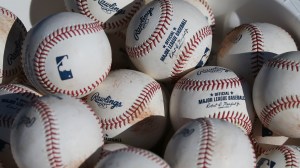This is an archived article and the information in the article may be outdated. Please look at the time stamp on the story to see when it was last updated.
LAWRENCE, Kan. — Our FOX4 Zip Trip this week takes us to the home of the University of Kansas – Lawrence, Kansas. This college town started out as a rebellion, of sorts. Back in 1854, a group of New Englanders started the town specifically to endorse their anti-slavery beliefs. The Kansas-Nebraska Act meant residents would decide whether Kansas should allow slaves or not, so many abolitionists – including Amos Lawrence, whom the town is named after – moved to the territory to try and sway popular opinion. But tensions rose on the border with Missouri, culminating in William Quantrill’s raid in 1863.
“It was a larger raid than they typically were,” said Steve Nowak, the Director of the Watkins Museum of History. “He brought a band of about 400 men – the typical raiding group was maybe 30 or 40 – and caught Lawrence by surprise. They burned downtown to the ground and killed about 180 men.”
From the ashes, the town grew again. Amos Lawrence helped finance construction of the University of Kansas, and many began to move to Lawrence not only for school but to raise their families.
“There were a lot of aspirations in Lawrence that we would be a major city but really by the 1920’s, it was clear that Kansas City would be that metropolis in that part of Kansas and the focus really turned to the University,” said Nowak.
You can learn more about the history of Lawrence at the Watkins Museum of History at 1047 Massachusetts Street. It’s free to get in.
Four other must-sees when you visit town include the Baker Wetlands. Located in the southern part of town off K-10 and Iowa, these wetlands allows people to explore a natural environment they don’t normally see in Kansas.
“How many wetlands are in Kansas?” asked Irene Unger, Director of the Baker Wetlands. “It had me at hello. I fell in love with this place the first time I saw it. You get a chance to be out there with nature. There’s just something restorative and good about being in nature.”
They recently built a new Discovery Center where you can learn about the history of the wetlands and how Baker University came to care for this land. There are hundreds of species of birds and plants, attracting many students to study this unique ecosystem.
Another must-see: the KU Biodiversity and Natural History Museum. Located on the KU campus next to the Student Union, this museum teaches kids about the history of this part of the country and the animals and people who helped shape this land. They built it in the late 1800’s as a home for a collection of native animals stuffed and displayed at the World’s Fair.
“It was created for the Chicago World’s Fair in 1893,” said Lori Schlenker, the Collections and Facilities Coordinator. “It was wildly popular. People stood in line and tens of thousands of people came to see this exhibit. After the World’s Fair closed, the Chancellor at the time petitioned the legislature to build this building to house the panoramic gallery and also the Natural History collection.”
They also display fossils, insects and other interesting things. It’s free to get in though a donation is encouraged.
While on campus, you can also visit the Robert J. Dole Institute of Politics at 2350 Petefish Drive. The museum details the life of former Kansas Senator Bob Dole, who hurt his arm in World War II and went on to a long, successful political career capped by a presidential run in 1996. There are a lot of memorabilia from his life and details on all he accomplished, including leading the charge to pass the Americans with Disabilities Act. The museum also has the largest stained glass American flag in the world and two beams from the World Trade Center. It, too, is free to get in.
And our number one must-see are the Rules of the Game. Housed in the DeBruce Center, which is connected to Allen Fieldhouse, these two sheets of paper display the original rules of the game of basketball. Written by Dr. James Naismith, he created basketball as a way to keep kids active in the winter months. He wrote down 13 rules, and those rules are now preserved behind glass for all to see.
“We’re the place where the game of basketball grew up,” said Andrea Johnson of Explore Lawrence. “James Naismith invented the game in Massachusetts, but he brought the game to Lawrence and the University of Kansas and this is why we say we’re the cradle of basketball – because this is where the game of basketball grew up.”
Dr. Naismith was KU’s first basketball coach, which went on to become one of the most successful basketball programs in the nation. KU grad David Booth bought the Rules at an auction and donated them to the University for all to see.
Besides these attractions, many love to visit Lawrence because it is a diverse town with many unique businesses and attractions.
“We have so much to offer,” Johnson said. “Definitely food. The live music scene. It’s just a place to come and relax and truly get away.”
v3 7 day ibo
7 Day Forecast
- Humidity
